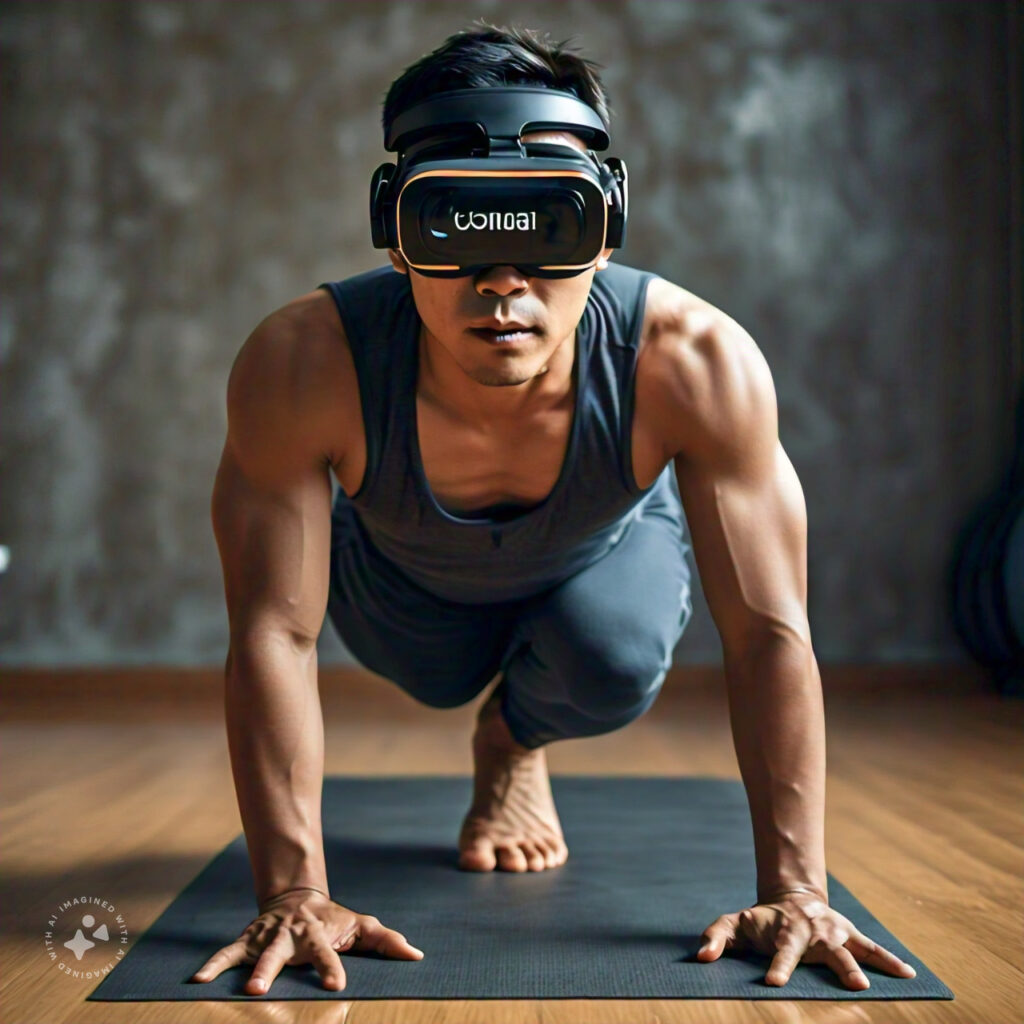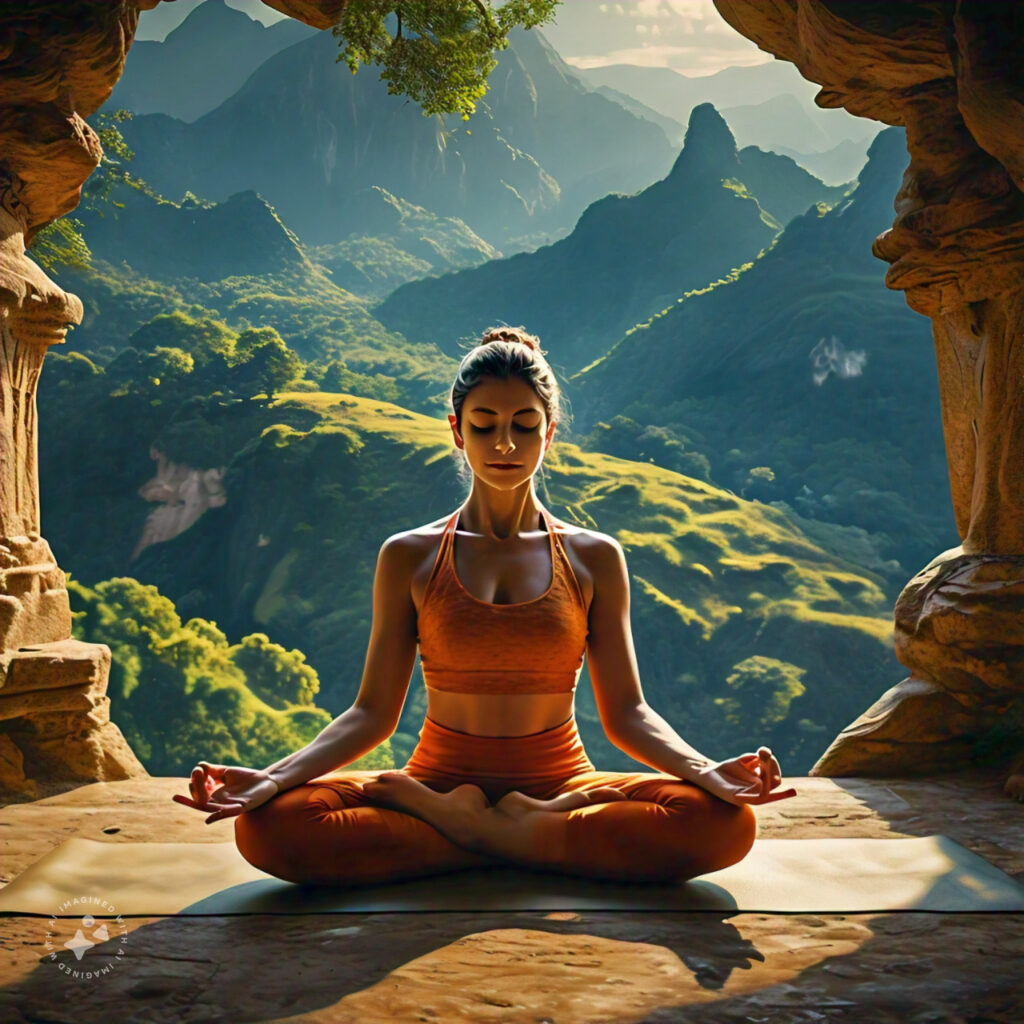Yoga has long been celebrated for connecting the mind, body, and spirit, offering a path to physical health, mental clarity, and spiritual awakening. Rooted in ancient practices, yoga has evolved over centuries to adapt to modern lifestyles. The latest development is Virtual Reality (VR) yoga—a fusion of ancient wisdom and cutting-edge technology. But is this marriage of old and new harmonious? Let’s explore the case for and against VR yoga.

The Case For VR Yoga
1. Accessibility and Convenience
One of the strongest arguments for VR yoga is its accessibility. You are no longer limited by location, class schedules, or instructor availability. With VR, your yoga studio is wherever you are. Whether you’re at home, traveling, or in a remote area without access to traditional yoga classes, VR brings the experience directly to you.
2. Immersive Experiences
VR yoga offers an immersive experience that can transport you to serene beaches, peaceful forests, or calming mountaintops—all from your living room. This level of immersion enhances relaxation and focus, making it easier to connect with the practice and leave daily stresses behind.
3. Personalized Guidance
For both beginners and seasoned practitioners, VR yoga platforms offer personalized guidance. Many apps provide real-time feedback on posture and alignment, helping users refine their practice and reduce injury risk. Additionally, users can choose from various yoga styles, session lengths, and difficulty levels, tailoring their experience to their specific needs.
4. Privacy and Comfort
For those who feel self-conscious in group settings, VR yoga offers a private space to practice without judgment. This is particularly beneficial for beginners who might feel intimidated by advanced practitioners in traditional class settings.
5. Innovation and Engagement
The gamification of yoga in VR can make the practice more engaging and enjoyable. With progress tracking, challenges, and rewards, VR yoga can motivate users to maintain a consistent practice and explore new aspects of yoga they might not have considered.
- Is There A Good VR Yoga Headset Product On The Market?
- Supernatural vs. FitXR: Which VR Yoga App is Right for You?
The Case Against VR Yoga
Also read: Latest Trending Solutions to Solve the Cons of VR Workouts
1. Authenticity Concerns
Yoga is not just physical exercise; it’s a deeply spiritual practice rooted in thousands of years of tradition. Critics argue that VR yoga could dilute yoga’s essence, reducing it to mere physical activity without its spiritual and cultural significance. The tech-driven experience may lack the depth and authenticity found in traditional settings with a live instructor.
2. Technological Barriers
While VR yoga offers convenience, it also requires expensive equipment and a stable internet connection. This reliance on technology can create a barrier, making the practice less accessible to those without the necessary tools. Additionally, technical issues like glitches or software crashes could disrupt the flow of practice.
3. Physical and Mental Discomfort
Extended use of VR headsets can lead to physical discomfort, such as eye strain, headaches, or motion sickness. The artificial nature of the virtual environment might detract from yoga’s mindfulness aspect, leading to a less grounded and fragmented experience.

4. Loss of Human Connection
Yoga has traditionally been practiced in community settings, where shared energy and connection enhance the experience. While VR yoga offers some social features, it cannot fully replicate the sense of community and interpersonal connection found in live classes. The lack of real-time human interaction may leave some practitioners feeling isolated.
5. Over-Reliance on Technology
Yoga encourages mindfulness and presence—qualities that might be compromised in a tech-driven environment. There is concern that over-reliance on VR could lead to a disconnect from the body and mind, making the practice more about the digital experience than self-awareness and inner peace.
For or Against?
The debate over VR yoga mirrors broader conversations about technology’s impact on our lives. While concerns about authenticity, human connection, and over-reliance on digital experiences are valid, the benefits of VR yoga are real. Much like other technological advancements that have revolutionized our lives, VR has the potential to enhance yoga practice in meaningful ways.
Consider smartphones. Initially, they were criticized for disrupting social lives and causing distractions. Yet, they have become indispensable tools, connecting us globally, providing instant information access, and offering platforms for mindfulness and meditation.
Social media is another example. It has sparked concerns about privacy and mental health but also created communities, raised global awareness, and allowed idea exchange across borders.
Online education faced backlash, with critics questioning its effectiveness compared to traditional classrooms. However, online learning has opened doors for countless individuals, offering flexibility and accessibility that were previously unimaginable.
These examples show that new technologies often provoke controversy, especially when challenging long-standing traditions. Yet, as we integrate these technologies into our routines, they bring undeniable benefits alongside challenges.
The same can be said for VR yoga. While it may never fully replace traditional practice, it offers opportunities for accessibility, personalized guidance, and immersive experiences that were previously out of reach. The convenience and innovation it brings are not to be dismissed, even as we remain mindful of preserving the essence of yoga.
So, where do you stand? For or against VR yoga? The choice is yours, as you weigh the tangible benefits of this technological advancement against the potential costs. As with any innovation, it’s about finding the balance that aligns with your values and goals, integrating the new while honoring the traditions that hold meaning.